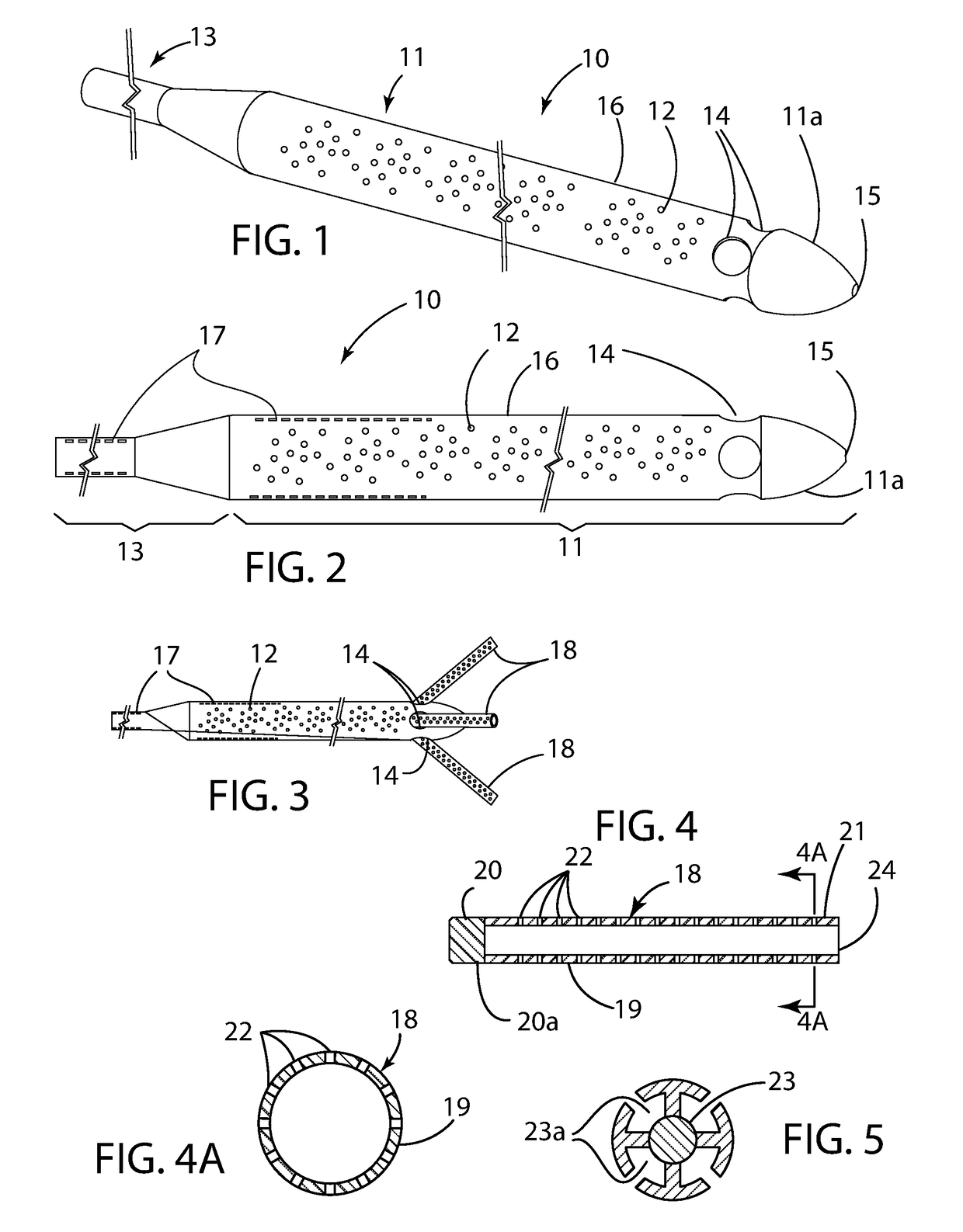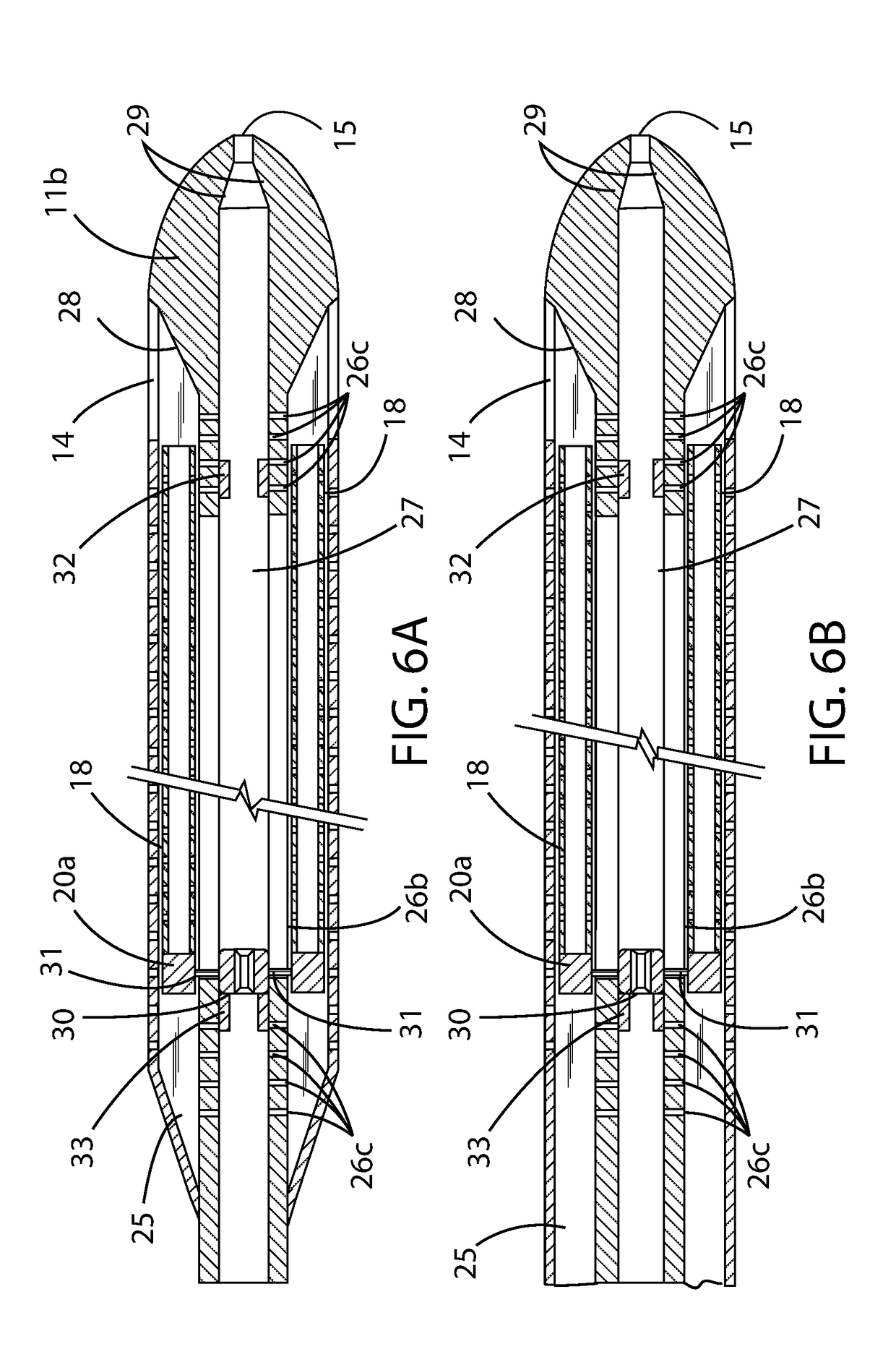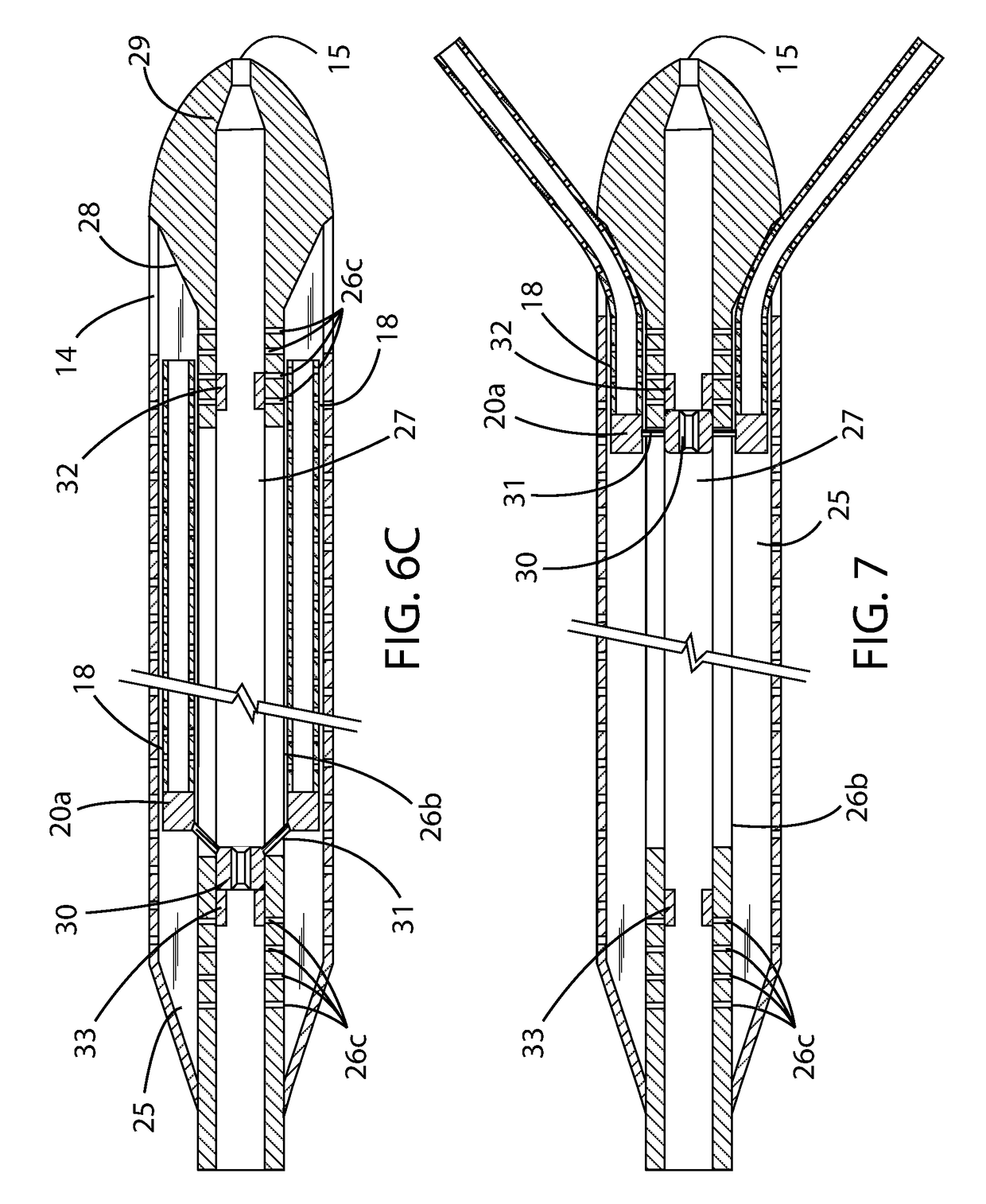Drainage Catheter With Retractable Internal Drains
a technology of internal drain and draining catheter, which is applied in the direction of catheter, wound drain, guide wire, etc., can solve the problems of frequent blockage of the catheter, unfavorable and excessive body fluid accumulation, etc., to achieve the effect of convenient insertion and placement of the primary catheter in the subj
- Summary
- Abstract
- Description
- Claims
- Application Information
AI Technical Summary
Benefits of technology
Problems solved by technology
Method used
Image
Examples
Embodiment Construction
A. Overview.
[0052]An example drainage catheter with retractable internal drains generally includes a primary catheter, a plurality of internal retractable drains, a central connecting piece, and a stylet adapted to engage with the central connecting piece. The primary catheter comprises proximal and distal ends and has a plurality of drain openings therebetween. A plurality of internal drain ports are formed in the distal end of the catheter body. A central track and a plurality of peripheral tracks within the primary catheter define a plurality of lumens which are adapted to conduct fluid flow between the proximal and distal ends of the catheter for drainage and irrigation.
[0053]An internal retractable drain is disposed within each of the peripheral tracks. During insertion of the primary catheter into a subject, the internal drains are in a retracted state within the peripheral tracks. After insertion, the internal retractable drains can be repositioned in a deployed state in whic...
PUM
 Login to View More
Login to View More Abstract
Description
Claims
Application Information
 Login to View More
Login to View More - R&D
- Intellectual Property
- Life Sciences
- Materials
- Tech Scout
- Unparalleled Data Quality
- Higher Quality Content
- 60% Fewer Hallucinations
Browse by: Latest US Patents, China's latest patents, Technical Efficacy Thesaurus, Application Domain, Technology Topic, Popular Technical Reports.
© 2025 PatSnap. All rights reserved.Legal|Privacy policy|Modern Slavery Act Transparency Statement|Sitemap|About US| Contact US: help@patsnap.com



